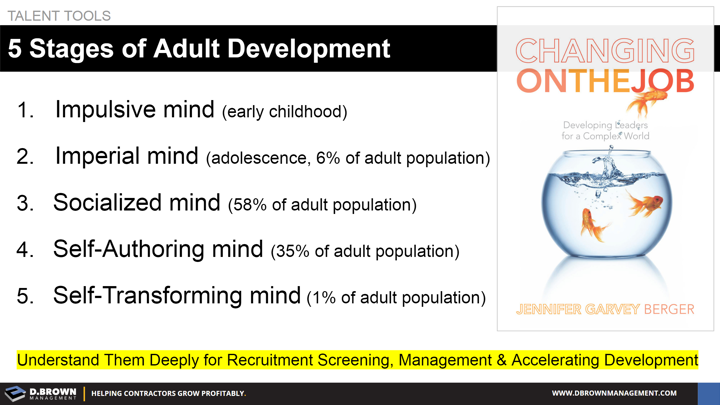You need to understand what works best in which situations and that is your value-add.
Leading a construction business is about leading people. The larger your team gets the more important it is to learn as much about talent development as you have learned about construction means and methods. These are not skills that can be delegated to someone in HR.
A couple things to consider as you go on this journey:
- As a whole we are much further down the road to understanding building materials. You cannot expect to find the same level of prescriptive formulas about how the human mind works as you can find about engineering calculations.
- At first there will seem to be dozens (or hundreds) of different models about how the mind works, how we learn, team dynamics, etc. As you study more you will see a lot of commonalities and this will help you develop your own style of leadership.
Changing on the Job is one of many great books on the topic of adult development in a professional context

